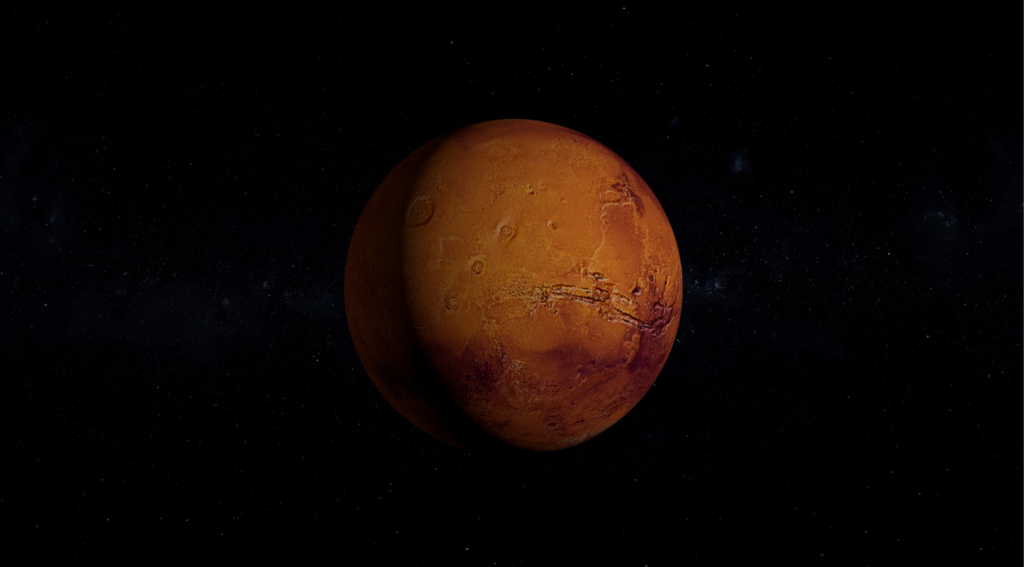The Race to Mars: A Global Endeavor
1. The Drive Behind the Next Mars Mission
Exploring Mars isn’t just a fascinating endeavor; it’s a testament to human curiosity and innovation.
The collective drive to uncover the mysteries of the Red Planet has fueled ambitious space agencies and private companies to push the boundaries of space exploration.
As advancements in technology propel us closer to our neighboring planet, the quest for knowledge and the desire to expand our understanding of the universe serve as the driving forces behind the next Mars mission.
2. Key Players in the Mars Exploration Arena
In the dynamic landscape of Mars exploration, several key players have emerged, each contributing unique expertise and resources to further our exploration efforts.
From established space agencies with decades of experience in space missions to pioneering companies daring to venture beyond Earth’s confines, a collaborative spirit binds these entities in a shared goal: unlocking the secrets of Mars.
Leading the charge are organizations like:
- NASA
- SpaceX
- ESA
- CNSA
and among others, whose contributions are shaping the future of interplanetary exploration.
Mission Objectives: Scientific Goals and Beyond
Searching for Past and Present Life
Exploring Mars is not just about uncovering its geological secrets; it’s also a quest to search for traces of past life and assess the planet’s current habitability.
Scientists aim to analyze Martian soil and rocks for any signs of microbial life that may have existed in the past.
By studying the planet’s geology and chemistry, researchers hope to piece together the puzzle of Mars’ potential habitability, shedding light on the possibility of life beyond Earth.
Geologic and Climate Studies
Understanding the geology and climate of Mars is crucial to unraveling the planet’s history and evaluating its future exploration potential.
Scientists plan to conduct detailed analyses of Mars’ surface features, including its canyons, valleys, and polar ice caps, to decipher the planet’s geological evolution.
Additionally, studying Mars’ thin atmosphere and seasonal changes will provide valuable insights into its climate dynamics, contributing to our understanding of planetary processes beyond our own.
Preparing for Human Exploration
While robotic missions pave the way for scientific discoveries on Mars, they also play a pivotal role in preparing for future human exploration.
By testing technologies such as life support systems, habitat modules, and resource utilization methods, space agencies can gather essential data to support safe and sustainable human missions to the Red Planet.
These preparatory efforts are crucial steps towards realizing the long-term goal of establishing a human presence on Mars, marking a significant milestone in our exploration of the cosmos.
Technology and Innovation: The Heart of the Mission
Advanced Propulsion Systems
In space exploration, cutting-edge propulsion systems are pivotal for propelling spacecraft on interplanetary journeys like the upcoming mission to Mars.
Technologies such as ion propulsion, nuclear thermal propulsion, and solar electric propulsion offer superior efficiency and speed compared to traditional chemical propulsion systems.
Ion propulsion systems, for instance, use electricity to accelerate ions to generate thrust, enabling spacecraft to reach higher velocities over time.
These advanced propulsion technologies are crucial for minimizing travel time and ensuring the success of missions to distant celestial bodies like Mars.
Robotics and Rovers
Robotic exploration plays a vital role in the mission to Mars, with autonomous rovers serving as the eyes and hands of scientists on the Red Planet.
These sophisticated machines are equipped with a myriad of instruments, including high-resolution cameras, spectrometers, and drills, allowing them to analyze Martian soil and rocks in great detail.
Rovers like NASA’s Perseverance and ESA’s Rosalind Franklin are designed to traverse challenging terrain, collect samples, and conduct experiments to further our understanding of Mars’ geology and potential habitability.
Robotics not only enhance scientific exploration but also pave the way for future human missions by testing technologies under Mars’ harsh conditions.
Life Support and Habitats for Astronauts
Ensuring the well-being of astronauts during extended missions to Mars requires advanced life support systems and habitats designed to provide a safe and habitable environment in the harsh Martian landscape.
These systems must recycle air, water, and waste, mimicking Earth’s essential processes to sustain human life for prolonged periods.
Habitats, whether inflatable structures or underground shelters, shield astronauts from radiation, extreme temperatures, and dust storms while offering comfort and protection.
Developing robust life support technologies and habitats is crucial for the sustainability and success of future crewed missions to Mars, laying the foundation for establishing a long-term human presence on the Red Planet.
Challenges and Solutions for the Red Planet

Navigating Mars’ Harsh Environment
Navigating Mars’ harsh environment presents significant challenges due to its thin atmosphere, intense dust storms, and extreme temperatures.
To address these obstacles, innovative solutions are required.
One approach involves designing robust rovers equipped with durable materials to withstand the rugged terrain and temperature variations.
Additionally, advancements in autonomous navigation systems enable precise maneuvering through the Martian landscape, enhancing mission efficiency.
Overcoming these environmental obstacles is essential to ensure the success of future missions to Mars.
Overcoming Communication Delays
Communication delays between Earth and Mars, caused by the vast distance between the two planets, pose a critical hurdle for real-time control and data transmission.
To mitigate this challenge, I propose utilizing advanced communication technologies such as deep space networks and relay satellites.
By establishing a reliable network infrastructure, we can enhance communication capabilities and reduce signal latency, enabling prompt data exchange and remote operation of Martian missions.
Overcoming communication delays is paramount for streamlining mission operations and maximizing scientific productivity during exploration endeavors on the Red Planet.
The Budget: Funding the Next Giant Leap
International Collaborations and Investments
Collaborations in space exploration, especially for missions to Mars, involve significant financial commitments from multiple countries.
It’s essential to note that the funding for these projects often stems from collaborative efforts between various space agencies. Organizations like NASA, ESA, and others pool their resources to support ambitious Mars missions.
For instance, the Mars Sample Return mission, a joint effort between NASA and ESA, requires substantial investment to successfully collect samples from the Martian surface and bring them back to Earth for analysis.
This collaboration not only combines expertise but also financial resources to achieve groundbreaking scientific discoveries.
Moreover, private companies, such as SpaceX, play a vital role in funding Mars missions.
Elon Musk’s vision for interplanetary travel includes significant investment in developing reusable rockets and spacecraft for Mars colonization.
SpaceX’s innovative approach to space exploration has attracted not only public interest but also substantial private investments, showcasing a blend of entrepreneurial spirit and technological advancement in funding the next giant leap.
Public and Private Sector Roles
The involvement of both public and private sectors in funding Mars missions underscores the diverse financial landscape of space exploration.
While government agencies like NASA receive public funding for their missions, private companies like SpaceX rely on a mix of revenue streams, including commercial satellite launches and partnerships with government agencies.
Public sector investments in Mars exploration not only drive scientific discovery but also symbolize a nation’s commitment to pushing the boundaries of human knowledge beyond Earth.
These funds support the development of advanced technologies, infrastructure, and research necessary for successful missions to Mars.
On the other hand, private sector initiatives in space exploration demonstrate the potential for commercial viability in Mars missions.
Companies like Blue Origin and SpaceX leverage private funding to accelerate the pace of innovation and exploration, introducing competition and efficiency into the sector.
The synergy between public and private sector roles in funding Mars missions highlights the collective effort required to realize the next giant leap in space exploration.
By combining resources, expertise, and vision, both sectors contribute significantly to advancing humanity’s presence beyond Earth.
Public Engagement and Education
Cultivating Interest in STEM
Stimulating interest in STEM fields is crucial for nurturing the next generation of scientists and engineers.
Engaging young minds in:
- Science,
- Technology
- Engineering
- Mathematics
ignites a passion for exploration and discovery.
Educational programs, workshops, and outreach initiatives play a pivotal role in fostering curiosity about space exploration and the mission to Mars.
The Role of Media in Space Exploration Updates
Media serves as a powerful tool for disseminating information about space missions and discoveries.
Coverage by news outlets, documentaries, and social media platforms amplifies public awareness and interest in space exploration updates.
Captivating visuals, interactive content, and expert commentary help convey the significance and excitement of the upcoming Mars mission to a global audience.



 Hisako Turner (Author & Senior Political Correspondent)
Hisako Turner is an author and Senior Political Correspondent at The Vital Insight Hub. Known for her deep understanding of global politics and her ability to break down complex issues, Hisako leads the platform’s coverage of international events and political affairs. Her extensive experience in the field and attention to detail ensure that The Vital Insight Hub offers readers well-rounded and thoroughly researched articles.
Hisako Turner (Author & Senior Political Correspondent)
Hisako Turner is an author and Senior Political Correspondent at The Vital Insight Hub. Known for her deep understanding of global politics and her ability to break down complex issues, Hisako leads the platform’s coverage of international events and political affairs. Her extensive experience in the field and attention to detail ensure that The Vital Insight Hub offers readers well-rounded and thoroughly researched articles.
